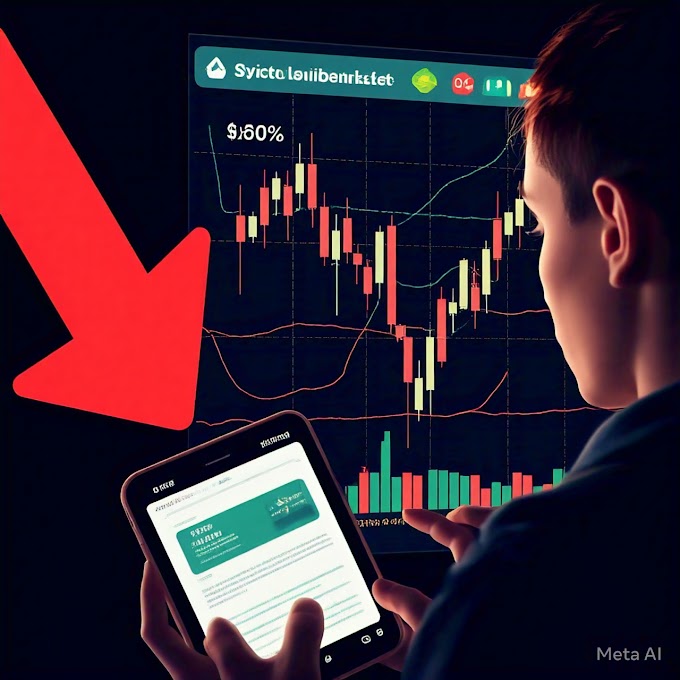Cryptocurrency markets are a whirlwind of opportunity and uncertainty, capturing the attention of investors, traders, and enthusiasts worldwide. The question "how to know which crypto will go up today" is one that many ask, driven by the desire to capitalize on the market’s volatility. Predicting daily price movements in cryptocurrencies is no easy feat—it’s a blend of art, science, and calculated risk. Unlike traditional markets, crypto operates 24/7, with prices influenced by a dizzying array of factors, from global news to technical indicators. This article dives into practical strategies to help you make informed decisions about which cryptocurrencies might rise on any given day, without relying on crystal balls or blind luck.
While no method guarantees success, understanding market trends, analyzing data, and staying informed can give you an edge. Whether you’re a seasoned trader or a curious newcomer, this guide breaks down the key approaches to identifying potential winners in the crypto market. From technical analysis to sentiment tracking, we’ll explore actionable steps to help you navigate the chaotic yet exciting world of cryptocurrency trading.
Table of Contents
- Understanding Cryptocurrency Market Dynamics
- Conducting Fundamental Analysis
- Leveraging Technical Analysis
- Monitoring Market Sentiment and News
- Using On-Chain Data and Metrics
- Risk Management and Realistic Expectations
- FAQs
- Conclusion
1. Understanding Cryptocurrency Market Dynamics
The crypto market is unlike any other financial market. It’s decentralized, highly volatile, and influenced by a unique mix of technological, economic, and psychological factors. To predict which crypto might go up today, you first need to grasp what drives price movements.
Cryptocurrencies like Bitcoin, Ethereum, and thousands of altcoins are traded globally, with prices fluctuating based on supply and demand. Unlike stocks, which are tied to company performance, crypto prices are often driven by speculation, adoption rates, and macroeconomic trends. For instance, a major company announcing it accepts Bitcoin as payment can send its price soaring. Conversely, regulatory crackdowns or security breaches can trigger sharp declines.
Market cycles also play a role. Bull markets, characterized by rising prices and optimism, often see widespread gains across many cryptocurrencies. Bear markets, on the other hand, bring caution and declines. Daily price movements, however, are more nuanced, influenced by short-term events like exchange listings, developer updates, or even viral social media posts. Understanding these dynamics helps you focus on what matters most when predicting daily price spikes.
2. Conducting Fundamental Analysis
Fundamental analysis involves evaluating a cryptocurrency’s underlying value based on its technology, team, and market potential. While it’s more suited for long-term investing, certain aspects can clue you into short-term price movements.
Start by researching the project’s purpose and utility. Does the cryptocurrency solve a real-world problem? For example, Ethereum’s smart contract platform powers decentralized applications, giving it a strong use case. Projects with clear utility often attract attention, especially when new partnerships or updates are announced.
Next, check the development team and community support. A strong, transparent team with a track record of delivering updates can boost confidence in a project. Look at their GitHub activity for signs of ongoing development. Community engagement on platforms like Discord or Telegram can also signal growing interest, which may drive prices up.
Finally, keep an eye on upcoming events like mainnet launches, token burns, or exchange listings. These milestones often create hype, leading to short-term price surges. Websites like CoinMarketCal or CoinGecko list these events, helping you spot potential catalysts for a crypto’s daily performance.
3. Leveraging Technical Analysis
Technical analysis (TA) is a go-to tool for traders aiming to predict short-term price movements. It involves studying price charts, patterns, and indicators to identify trends and potential breakouts. While TA isn’t foolproof, it’s especially useful for daily trading.
Start with price charts on platforms like TradingView or Coinigy. Look for patterns like breakouts from resistance levels or consolidations that suggest a big move is coming. Candlestick patterns, such as doji or engulfing candles, can also hint at reversals or continuations.
Key indicators to watch include:
- Moving Averages (MA): The 50-day and 200-day MAs show long-term trends, while shorter ones (like 10-day) highlight daily momentum.
- Relative Strength Index (RSI): An RSI above 70 suggests a crypto is overbought, while below 30 indicates oversold conditions.
- Volume: Spikes in trading volume often precede price movements, signaling strong buying or selling pressure.
For daily predictions, focus on shorter timeframes (1-hour or 4-hour charts) and combine multiple indicators for confirmation. For example, a breakout above a resistance level with high volume and a rising RSI could signal a crypto is poised to go up today.
4. Monitoring Market Sentiment and News
Crypto markets are heavily influenced by sentiment—what people think, say, and feel about a coin. Social media platforms, news outlets, and forums can create waves of hype or fear that move prices in hours.
Track sentiment on platforms like X or Reddit. Tools like LunarCrush analyze social media activity, measuring mentions, engagement, and sentiment for specific cryptocurrencies. A sudden spike in positive posts about a coin could indicate growing interest, potentially driving its price up.
News is another critical factor. Announcements like regulatory approvals, hacks, or major partnerships can cause immediate price swings. Set up Google Alerts or follow crypto news sites like CoinDesk or CoinTelegraph to stay updated. For example, if a major exchange lists a lesser-known altcoin, its price often jumps due to increased accessibility and exposure.
Influencers also play a role. While you shouldn’t blindly follow crypto “gurus,” a tweet from a prominent figure can spark short-term price action. Cross-check their claims with other data to avoid falling for pump-and-dump schemes.
5. Using On-Chain Data and Metrics
On-chain data provides insights into what’s happening within a blockchain, offering clues about a crypto’s potential price movement. This data is publicly available for most cryptocurrencies and can be a powerful tool for daily predictions.
Key on-chain metrics include:
- Transaction Volume: High transaction activity suggests increased usage, which can drive prices up.
- Active Addresses: A surge in active wallet addresses indicates growing adoption or interest.
- Exchange Flows: Large inflows to exchanges might signal selling pressure, while outflows suggest holders are storing coins long-term, a bullish sign.
Platforms like Glassnode, CryptoQuant, or Santiment provide on-chain analytics. For instance, if a coin shows a spike in active addresses and declining exchange balances, it could indicate accumulation by investors, potentially leading to a price increase.
On-chain data is especially useful for spotting whale activity—large transactions by major holders. If whales are buying, it could be a sign the price is about to rise. Tools like Whale Alert track these movements in real time.
6. Risk Management and Realistic Expectations
Predicting which crypto will go up today is inherently risky. The market’s volatility means even the best analysis can be wrong. To protect yourself, prioritize risk management and set realistic expectations.
Never invest more than you can afford to lose. A common rule is to allocate only 1-5% of your portfolio to a single trade. Use stop-loss orders to limit losses if a trade goes against you. For example, setting a stop-loss 5% below your entry price can prevent catastrophic losses.
Diversify your trades across multiple cryptocurrencies to spread risk. Avoid chasing hype-driven pumps, as they often lead to sharp dumps. Instead, focus on coins with strong fundamentals, technical setups, or positive news catalysts.
Finally, accept that no one can predict the market with 100% accuracy. Even professional traders lose money on some trades. The goal is to make informed decisions that increase your odds of success over time.
7. FAQs
Q: Can I accurately predict which crypto will go up every day?
A: No method guarantees daily accuracy due to the market’s volatility. Combining fundamental analysis, technical analysis, and sentiment tracking can improve your chances, but there’s always risk.
Q: Are there tools to help predict crypto price movements?
A: Yes, tools like TradingView (for technical analysis), LunarCrush (for sentiment), and Glassnode (for on-chain data) provide valuable insights. Always cross-check data from multiple sources.
Q: How much should I invest in crypto?
A: Only invest what you can afford to lose. A common approach is to risk 1-5% of your portfolio per trade and diversify to minimize losses.
Q: Do influencers’ predictions affect crypto prices?
A: Influencers can create short-term price movements, but their impact is often fleeting. Verify their claims with other data to avoid scams.
Q: Is technical analysis better than fundamental analysis for daily predictions?
A: Technical analysis is more suited for short-term trading, while fundamental analysis helps with long-term trends. Combining both gives a fuller picture.
8. Conclusion
Figuring out which cryptocurrency will go up today is a challenging but exciting pursuit. By understanding market dynamics, conducting fundamental and technical analysis, monitoring sentiment, and leveraging on-chain data, you can make more informed decisions. However, the crypto market is unpredictable, and no strategy is foolproof. Risk management is crucial—protect your capital, diversify, and stay disciplined.
Success in crypto trading comes from continuous learning and adapting to new information. Stay curious, keep researching, and don’t let short-term losses discourage you. The market rewards those who combine patience, strategy, and a clear head. Start small, experiment with the tools and methods discussed, and over time, you’ll develop a sharper sense of which cryptos might shine on any given day.


.png)
.png)
.png)





